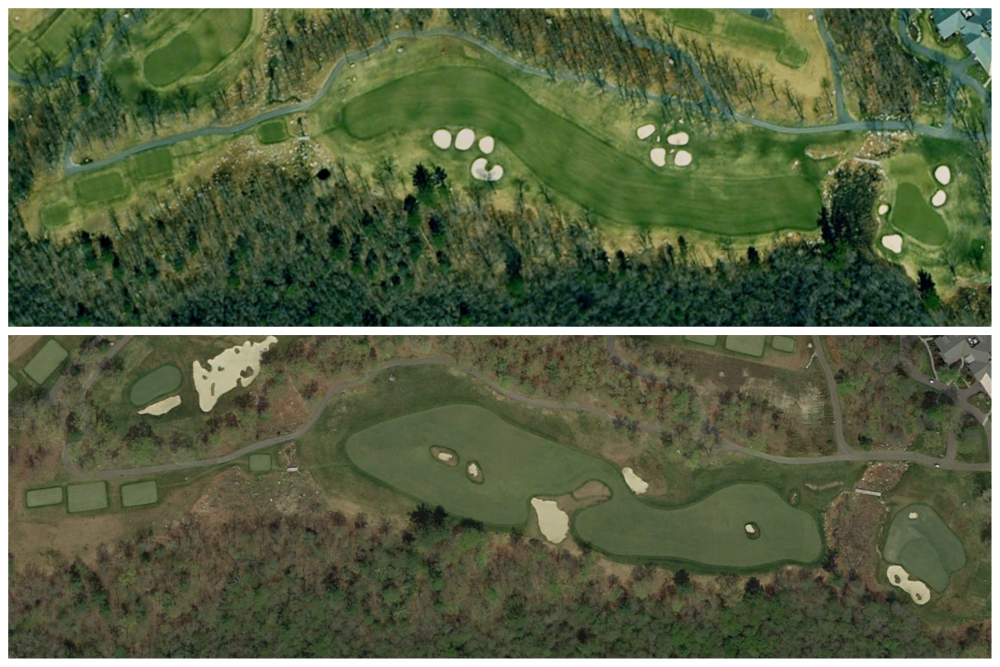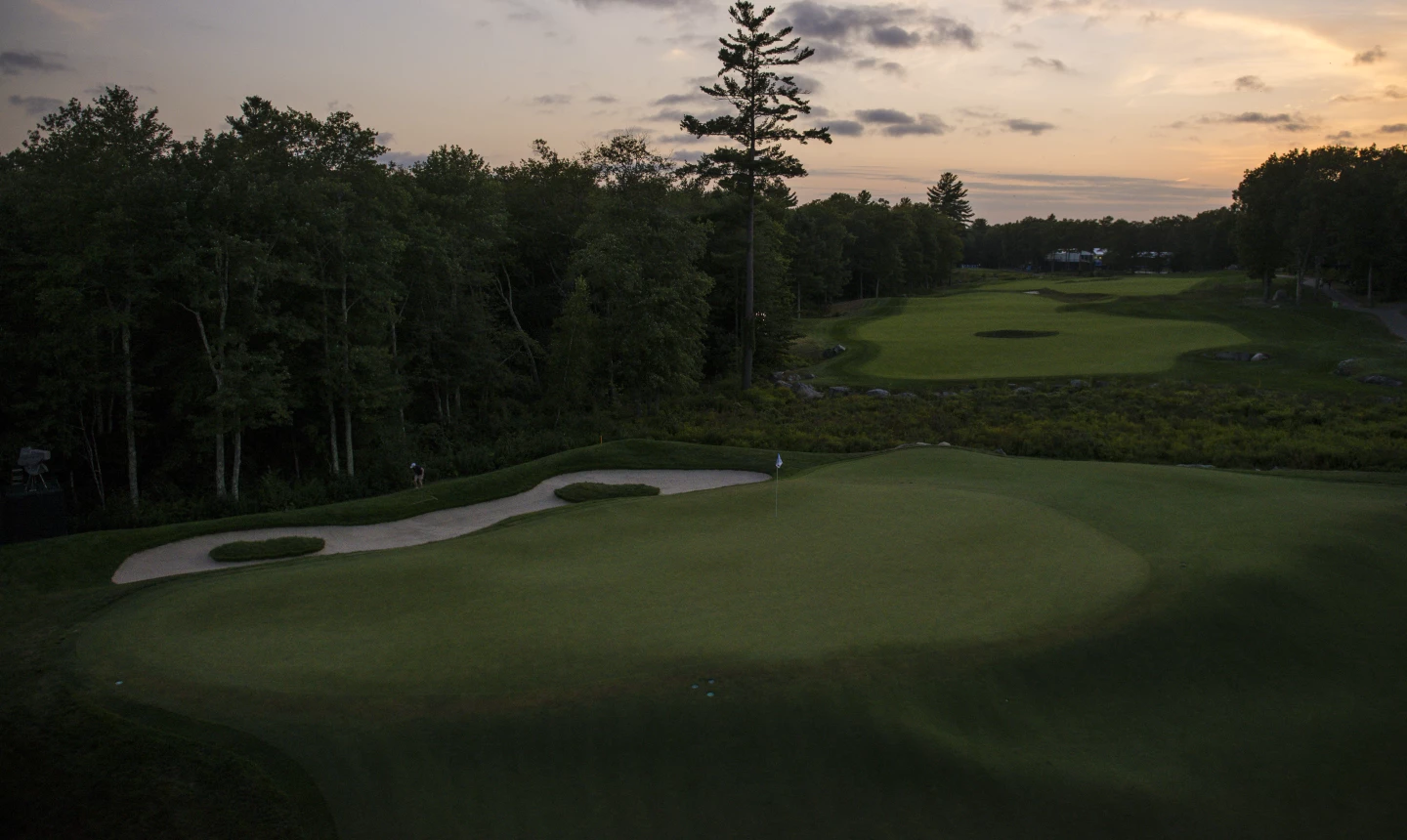Whether it's for a beer against your buddies or for $15 million at the end of the PGA Tour season, if you want to play a golf course well, it helps to know what kind of test you're getting yourself into.
No, I'm not talking about parkland vs. desert vs. links vs. mountain golf. I'm talking about architecture, and particularly its two main "schools": penal and strategic.
Broadly speaking, penal golf course architecture places trouble in locations that will catch a poorly executed shot. An island green par 3 is the quintessential penal golf hole: hit it on the green or else. It is a pure test of a golfer's ability to send a ball to a defined target.
To put it in similar language, strategic golf course architecture places trouble in locations that will catch a poorly planned shot. The placement of trouble - bunkers, water, significant landforms, trees - tend to affect the level of aggression with which a player plays a shot. Whereas penal trouble generally has to be confronted, strategic trouble can be selectively avoided, often at the expense of a longer or more challenging next shot.
The golf courses built in the latter decades of the 20th century and early years of the 21st tended to lean towards penal architecture. Holes tended to be straightforward, laid out before golfers in a way that defined a clear though challenging path from tee to cup. Opened in 2002 and designed by Arnold Palmer's design firm, TPC Boston, like many courses purpose-built for holding elite professional tournaments, was largely penal in nature.
Take the reachable par-5 18th as an example. The fairway snaked around a cluster of four fairway bunkers, requiring about a 275-yard carry to reach the fairway over them. Even in the early 2000s such a shot was within reach of the vast majority of pros. For those who could manage the carry, the play was obvious: blast it over the bunkers to shorten the hole. For those who couldn't, there was plenty of fairway left.
An attempt to reach the green in two shots was also a penal proposition. With wetlands short and four more bunkers guarding the green, a pro would either pull off the shot or end up in some sort of difficulty. Beyond the decision of whether to try for the green or not (pretty much a no-brainer after any tee shot in the fairway), it was another pure execution test, often rewarding pros with easy birdies and the occasional eagle after two competent long shots.
When Gil Hanse redesigned the course in 2007, he brought more strategy to bear throughout the course. The original par-4 4th hole was a standard dogleg-right that any golfer has seen at a hundred courses or more. Hanse truncated it into a drivable hole with an appropriately devilish green, such that even professionals will regularly waffle over whether it is worth going for the green off the tee or laying back and trying to hit a pinpoint wedge onto the slender, well-guarded surface.

Hanse made TPC Boston's 18th hole more strategic, too. Now, the fairway measures some 70 yards across at its widest about 270 yards off the tee, more than double its previous width. Complicating matters are two pot bunkers in the center of the landing area just shy of that spot. From that point, the fairway bottlenecks to just a dozen yards wide at about 325 yards off the tee. Players who want to push it that far will have to contend with rough left and a handsomely rugged redesigned fairway bunker on the right. For longer hitters, the reward for taking such a risk is not just a shorter approach but a better angle to the redesigned green, now guarded by a large bunker to the right and (since 2012) a tiny pot and chipping area left, which can leave a tricky pitch or awkward sand shot.
These added complications mean playing the 18th as a three-shot hole may be more attractive to some players, so to address that potential, Hanse added one more pot bunker in the middle of the layup area. Pros whose tee shots get in trouble will not be able to mindlessly plod down the fairway; they'll have to contend with this feature.
Simply by repositioning the 18th hole's hazards, Gil Hanse managed to add multiple levels of sophistication to TPC Boston's 18th hole without any routing changes. His added options and intrigue could very well affect the outcome of this week's Northern Trust. It will be fun to watch not just the shots the word's best golfers hit, but the decisions they make along the way.












Actually TPC Boston was designed and built to be a member course and part of the TPC Network not a PGA Tour course. It isn’t spectator friendly.
Only after Seth Waugh brought the Duetsche Bank event and the reaction to it’s blandness were changes made to dress it up.